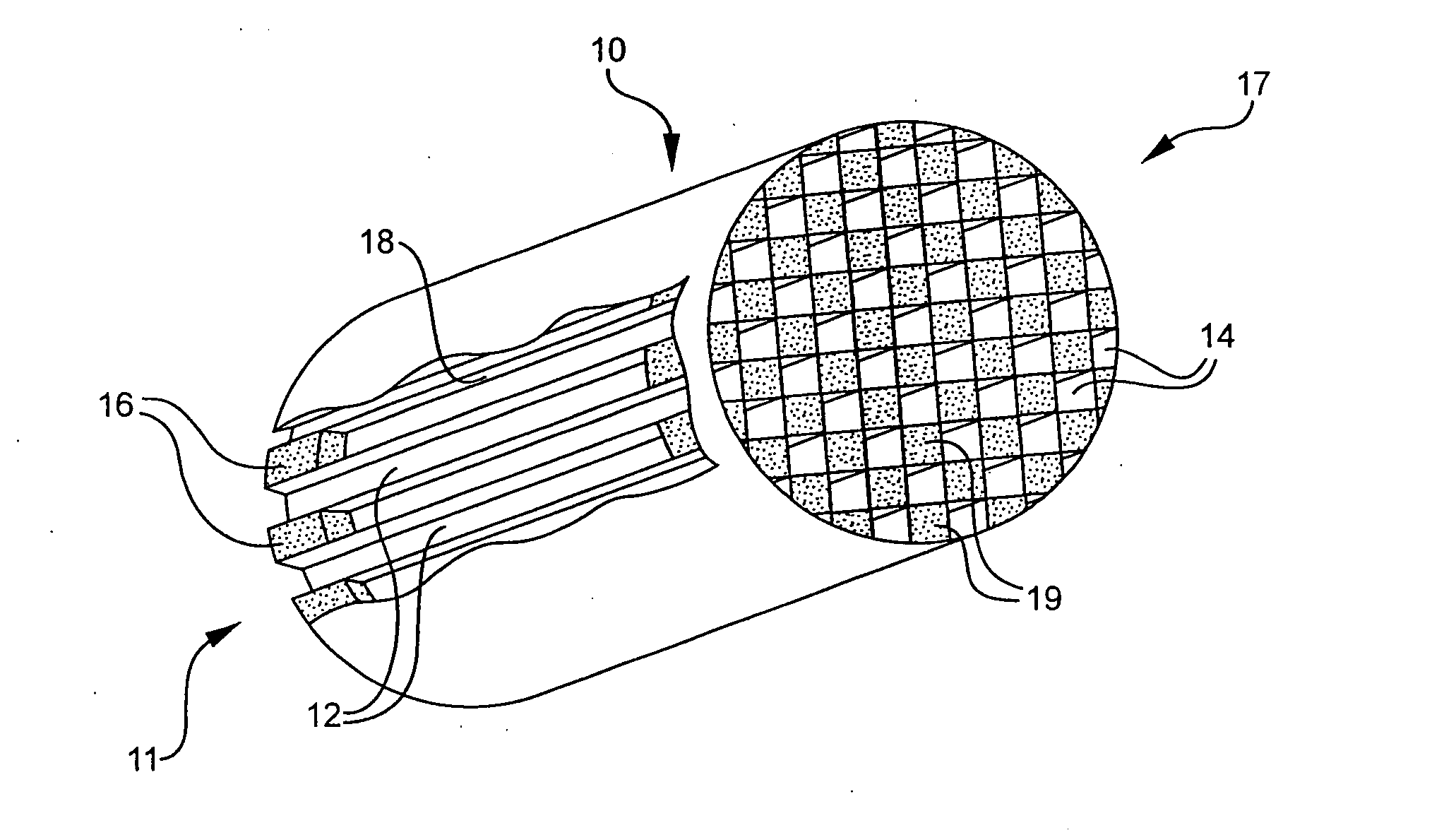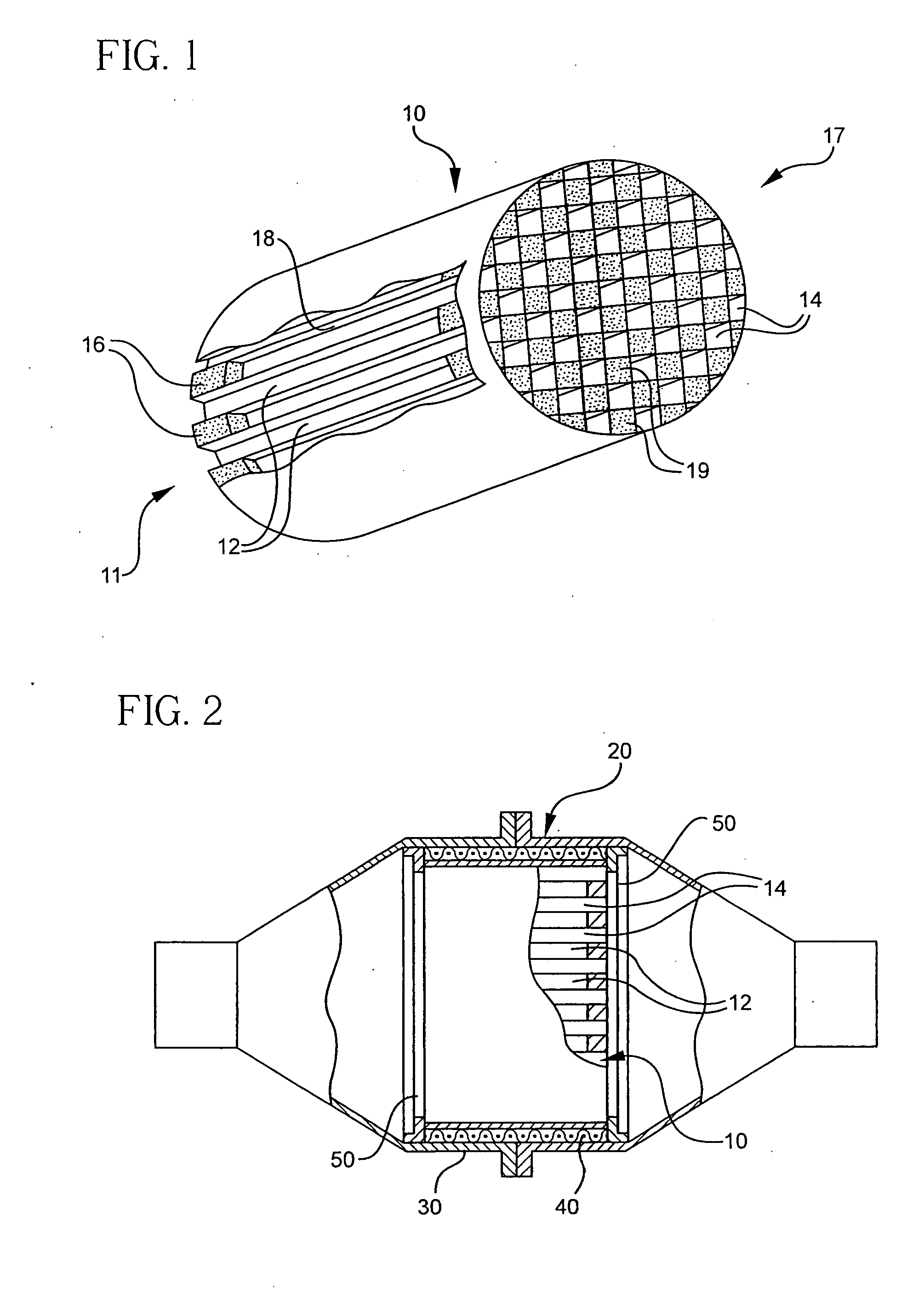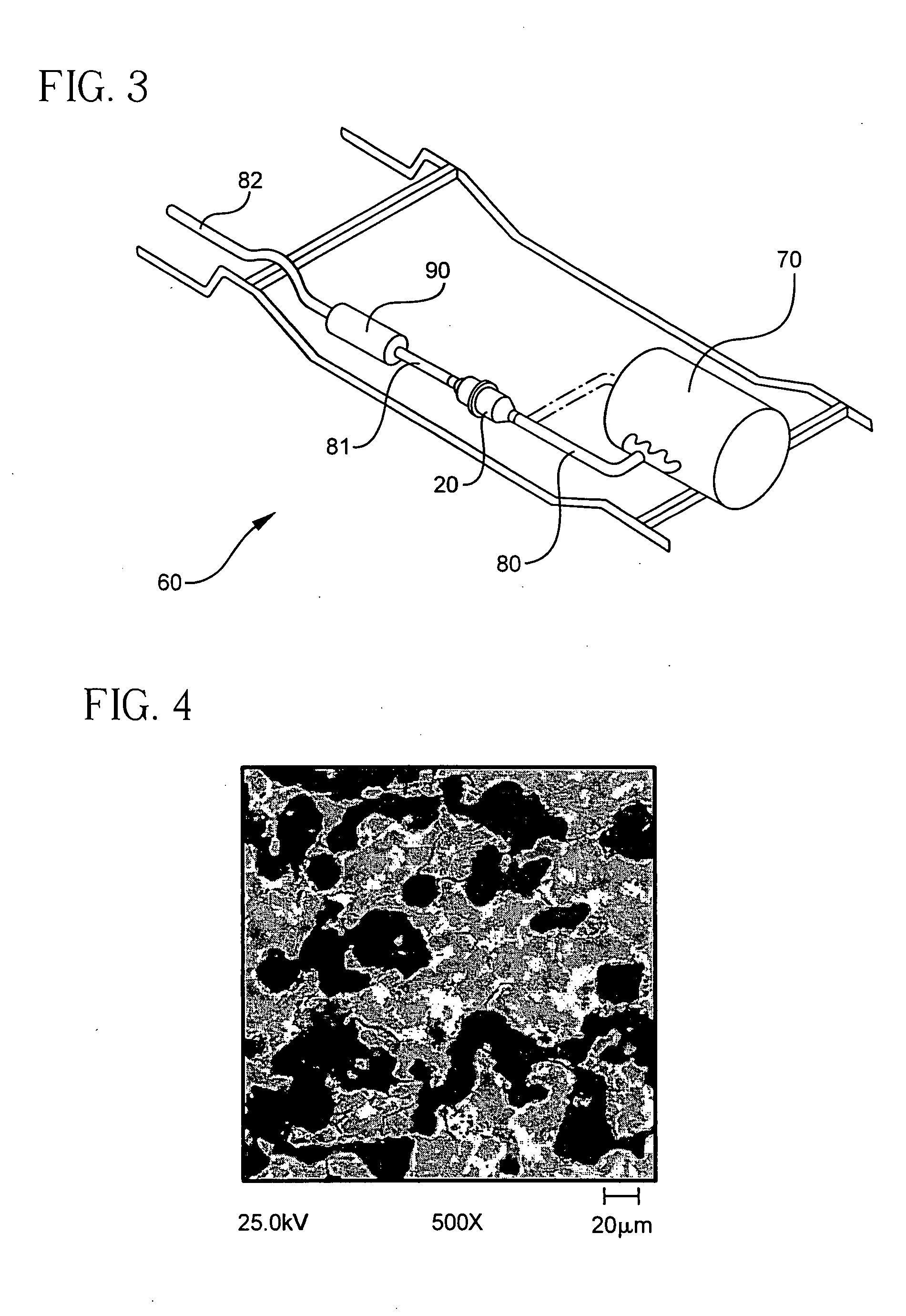Aluminum titanate ceramic articles and methods of making same
- Summary
- Abstract
- Description
- Claims
- Application Information
AI Technical Summary
Benefits of technology
Problems solved by technology
Method used
Image
Examples
examples
[0036] A batch is prepared by compounding raw materials, and then mixing them with the sintering aid and organic processing aid constituents in proportions as provided in the following Table I to form a mixture. The composition of the ceramic article produced is also provided. Such compositions, throughout the various examples given this specification, are calculated and expressed on a weight percent oxide basis. It should be understood that expressing such compositions on a weight percent oxide basis has been conventional in the art, although it is recognized that such oxides may not actually exist in the ceramic in their free form, but instead, may exist in a state where the oxygen atoms are bonded within crystalline or glass structures or phases formed in the ceramic.
TABLE Iwt. %Raw MaterialsSiO210.19SrCO38.00CaCO31.38Al2O346.57Al(OH)33.71TiO229.95Sintering AdditiveLa2O30.20Pore Former, Binder, Lubricant,SolventGraphite (Pore Former)30.0Methylcellulose (Binder)4.50Tall Oil (Lub...
PUM
| Property | Measurement | Unit |
|---|---|---|
| Temperature | aaaaa | aaaaa |
| Temperature | aaaaa | aaaaa |
| Fraction | aaaaa | aaaaa |
Abstract
Description
Claims
Application Information
 Login to View More
Login to View More - R&D
- Intellectual Property
- Life Sciences
- Materials
- Tech Scout
- Unparalleled Data Quality
- Higher Quality Content
- 60% Fewer Hallucinations
Browse by: Latest US Patents, China's latest patents, Technical Efficacy Thesaurus, Application Domain, Technology Topic, Popular Technical Reports.
© 2025 PatSnap. All rights reserved.Legal|Privacy policy|Modern Slavery Act Transparency Statement|Sitemap|About US| Contact US: help@patsnap.com



